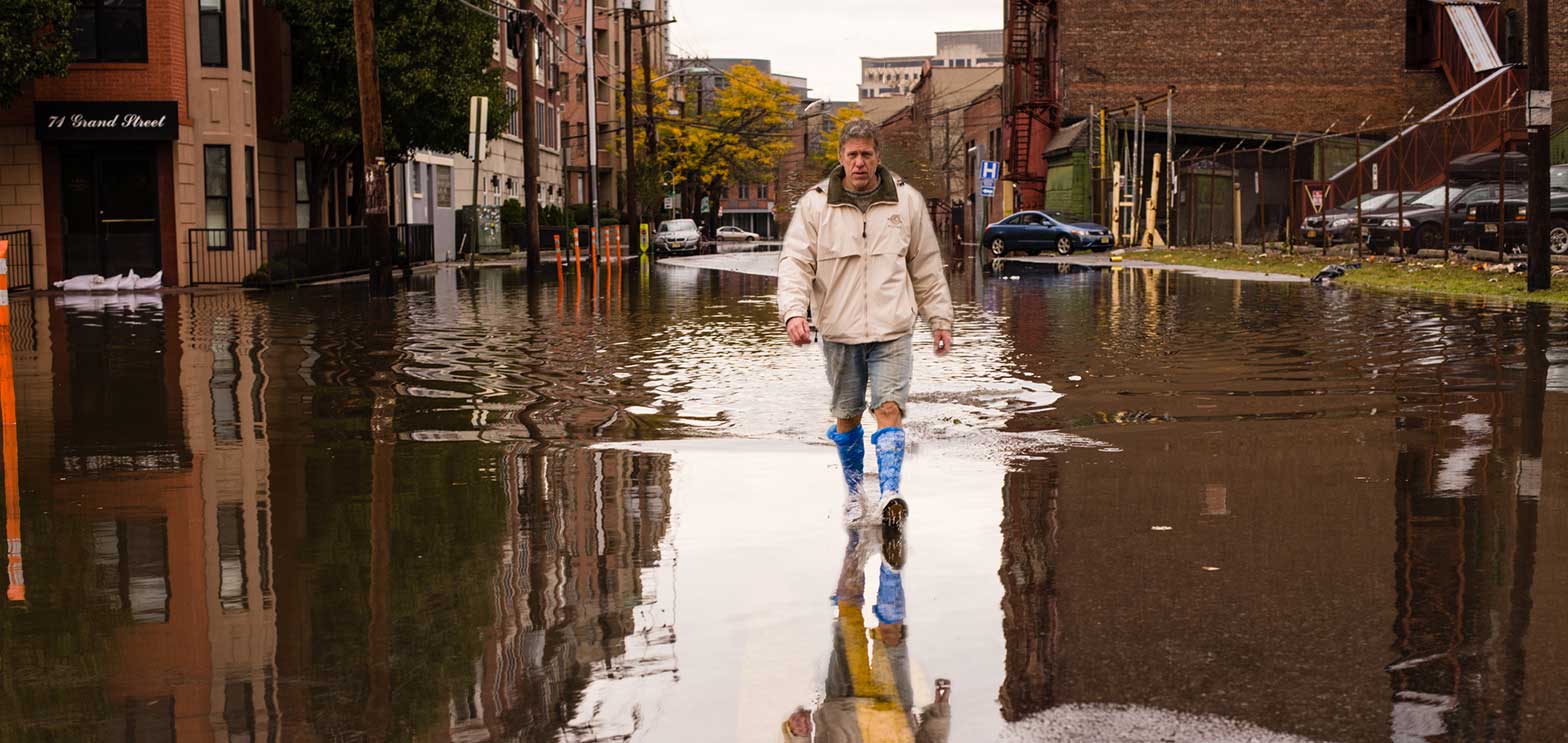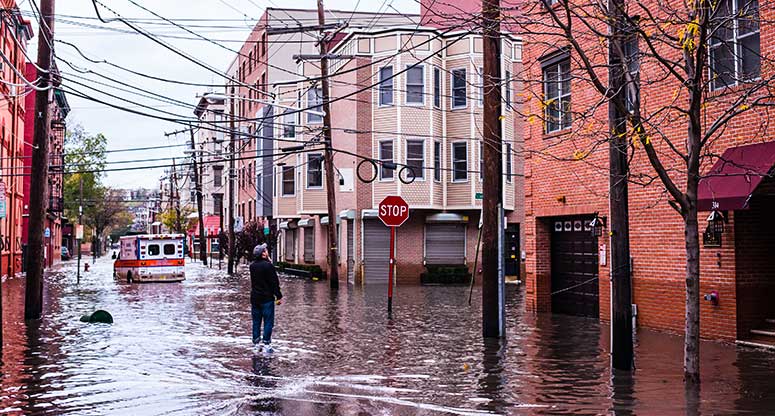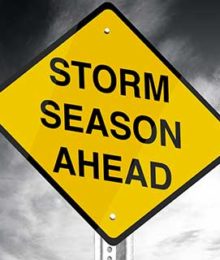Operations5 minute read
Are You Ready for Disruption? Preparing for the 2018 Hurricane Season
The 2018 hurricane season is here, and along with it, the need for advanced planning and preparations for businesses with call centers located in the storm zone.

As Labor Day weekend comes and goes, the peak of the 2018 hurricane season is here, from late August through September and, as usual, experts and forecasters are predicting the unpredictable.
Already in the first week of September, Tropical Storm Gordon—very nearly hurricane strength—has made landfall, closing schools and causing states of emergency in Florida and Louisiana, spurring storm-related preparations in Mississippi and Alabama. Governors in Florida and Texas “said they were monitoring developments,” report USA Today’s Doyle Rice and John Bacon.
Those leaders understand the importance of staying ahead of hurricane season as much as possible. It’s a lesson learned the hard way: Since Hurricane Katrina in 2005 (but also several times since), tropical storms and hurricanes have become part of the daily conversation month after month, as the season runs from June 1 through November 30.
And not just the southeast is affected, nor are the most severe activities restricted to August in and September. In late October 2012, Hurricane Sandy caused billions in damage New York, New Jersey, Massachusetts, and other parts of the upper Eastern seaboard, its disastrous repercussions lasting well into the winter months.

And, though experts don’t anticipate it matching the record-breaking destructiveness of 2017, it’s still too early to tell exactly how severe the 2018 hurricane season may be. One thing is certain, though: This year as in all the rest—preparation is key.
As Jonathan Erdman notes at weather.com, “even in what is expected to be a somewhat quieter overall hurricane season than 2017, you can still have impactful, landfalling tropical storms and hurricanes.”
Or, as National Weather Service meteorologist Phil Badgett told the Roanake Rapids Daily Herald, “it is never too soon to be prepared for anything.”
Residents along the Mississippi & Alabama coast should start preparing NOW for possible hurricane conditions later Tuesday night. Don't be caught off guard, #Gordon could surprise with intensity at landfall. pic.twitter.com/5EHfI00NXl
— Eric Snitil (@EricSnitilWx) September 3, 2018
This advice is particularly important for businesses with call centers or other important operations located within storm zones—especially the Gulf Coast regions of Florida, Alabama, Mississippi, Louisiana and Texas. For these businesses (and any other subject to natural disasters), Working Solutions contact center experts offer up a few important tips to help prepare for the worst.
4 Insights into Preparing for Hurricane Season
1. Start your storm plan today. If any aspect of your call center is in harm’s way—whether your main facility, a backup facility or even a handful of agents—then it’s imperative to do a storm plan. In a detailed rundown of how to create one, our experts provide some key questions for this process:
- Do you have backup call center agents standing by to ensure uninterrupted customer service?
- If yes, how long can those backup agents fill this need?
- If your in-house teams are overwhelmed, do you have a relationship with outside resources to step in to help?
The list of questions doesn’t end there. Best read “the 10 most important questions to ask when creating your action plan for the upcoming storm season.” You can find them all here.
2. Use predictive planning in your preparations. As storms become “windier, wetter, and powerful than ever —and seem to push further and further inland each year—the need for a comprehensive disaster recovery plan is more important than ever to ensure nonstop customer care for businesses within their paths.
And this requires predictive planning, our experts advise—the kind of strategic and informed problem-solving that’s at the heart of outsourced, onshore contact center service providers like Working Solutions.
“Our operations track hurricanes as they develop, anticipating when and where they will disrupt clients’ customer service,” says April Wiita, vice president of Program Success for Working Solutions. “Real-time communications, via mobile and online, alert agents days in advance.”
Our operations track hurricanes as they develop, anticipating when and where they will disrupt clients’ customer service.
With the use of STAR (Strategic Talent Ample Resources) maps, Working Solutions can pinpoint the location of appropriate backup agents, calibrate their numbers and schedule shifts accordingly, she adds. It’s all about “figuring a hurricane’s path and duration. Client work is moved out of harm’s way while bringing in additional agents from unaffected areas.” Read April’s full article here.
3. Upgrade your business continuity plan. When it comes to potential storm-related disruptions, business continuity is key. Outlined are four key steps to creating an effective business continuity plan, from assessing risk and anticipating demand to ensuring constant communications and appropriate levels of responsiveness.
“Working Solutions program managers monitor news alerts and weather reports,” says Ken Wheeley, the company’s senior director of Innovative Workflow. “When a storm is predicted, we first rely on client continuity plans already in place. Depending on a storm’s severity, we adjust resources and reserve agents to expand coverage or fill anticipated gaps in service.”
When a storm is predicted, we first rely on client continuity plans already in place.
But business continuity planning goes further than that: Sometimes, for example, a storm’s severity exceeds expectations. “As it intensifies and customer volume increases, we tap into agents on standby across the U.S., directing them into inundated areas to alleviate pressure,” Wheeley explains. “Our on-demand business model is designed to fast-flex up or down with weather conditions.” Read more here.
4. Partner with a remote/virtual contact center partner. Storms and hurricanes are great equalizers: No one is immune. Pointing out that even the Federal Emergency Management Agency (FEMA) offices closed during Hurricane Sandy, our experts point out there’s no surefire way to predict the outcome.
This highlights the need for continuity services for businesses at risk of such disasters—which, when you include nor’easters, earthquakes, fires and tornadoes, includes pretty much all of the continental United States. And for customer care operations, the best possible solution is to have a backup virtual contact center at the ready, where it’s simply a matter of rerouting transactions to agents outside the storm area.
But it’s also true that, from a business perspective, developing a remote agent center may not be efficient or feasible. Hence the need to find an outsourcing provider that can deliver the same level of service as your agents, but can also ensure that your contact center is up and running, regardless of the weather. Get more details here.
Uncertain about your potential to weather the 2018 hurricane season? It may be time to call in the experts: At Working Solutions, we provide full-service, turnkey solutions designed to ensure continuous call center operations during hurricane season and throughout the year.

Schedule a complimentary consultation with a business continuity expert. Start preparing for hurricane season today.
Contact us today
This Might Interest You...
This website uses cookies to personalize and improve your experience. Continue browsing our site if you agree to our Cookie Policy or feel free to Manage Cookies yourself.


